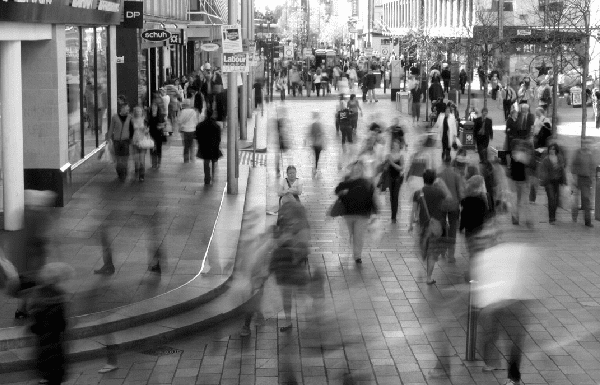
In 1964, Kitty Genovese was murdered outside her home in New York, while 38 witnesses did nothing to save her. This incident sparked a public outcry and was the catalyst for a considerable amount of research into what motivates people to help others in obvious need or what prevents them from helping.
The common sense explanation for this seeming lack of compassion are vague concepts such as ‘alienation’ and ‘apathy’. These explanations stem from the idea that our moral actions are determined by character traits. This explanation of morality has, however, been contradicted by results from contemporary research in social psychology.
Most research on helping behaviour has used experimental methodologies to study situations in which someone has a sudden need for help. Factors such as clarity, urgency of the need and skin colour, gender, age or handicap of the ‘victim’, how many potential helpers are present and the relationship between victim and subject have been manipulated. Researchers comparing helping behaviour in rural and urban areas consistently find that helping strangers is more likely in less densely populated areas.
Several studies have demonstrated that the presence of other observers reduces the likelihood that any one person will display a helping response. Contrary to common sense, there does not seem to be safety in numbers as the victim appears to have a greater likelihood of receiving help when there is a single witness rather than a group. Two possible psychological explanations proposed to explain the bystander effect are diffusion of responsibility among bystanders and a social norms explanation.
Researchers have developed a model that bystanders follow to decide if they will provide help or not. According to this model, a bystander goes through a five step decision tree before help is provided. Helping responses can, however, be inhibited at any stage of the process and no help is provided:
- The bystander needs to notice that an event is taking place, but may fail to do so and not provide help.
- The bystander needs to identify the event as some form of emergency. The situation may be ambiguous, preventing from help being given.
- The bystander needs to take responsibility for helping, but might avoid taking responsibility by assuming that some body else will (diffusion of responsibility).
- The bystander needs to decide on the appropriate helping response, but may not believe themselves to be competent to do so.
- The bystander needs to implement that response, but this may be against their interest to do so, specially in dangerous situations.
The objective of this study is to test whether the diffusion of responsibility or the social norms explanation is applicable to helping behaviour in a non-emergency situation. If the diffusion of responsibility explanation is correct, then the number of people providing help will be less when non-helping bystanders are present than when no bystanders are present. The social norms explanation predicts that helping behaviour is increased when a bystander offers help as compared to when no bystanders are present.
The study consisted of a task where a naive subject had an opportunity to help the experimenter in a non-emergency situation. All subjects were selected randomly, when the circumstances were suitable for undertaking the experiment. A confederate was used to act as a helping or non-helping bystander in the experiment. The experiment consisted of 135 trials in total. The data was obtained from 75 trials on four Monash University campuses and 47 responses were obtained by distance education students working in the general community. The data was appended with thirteen observations by the author obtained in a municipal park in central Victoria. Read more about this type of experiment in Psychology Today.
The experimenter looked for a person standing alone in a public place, with no other person present within ten metres. The subject was not participating in any specific activity to ensure they would notice the event. The experimenter then ‘accidentally’ dropped a pile of loose pages from a manilla folder close to the subject. The subject was defined as helping if he or she picked up one or more pages within thirty seconds from the drop. In cases where a third person started helping, or the subject was not able to help, the trial was not included in the results.
In the control condition only the subject and the experimenter were present. In the test conditions a confederate was standing nearby and the papers where dropped equidistant between the subject and the confederate. In one condition the confederate did not help, while in the other condition the confederate started helped picking up the papers, providing a model for the appropriate behaviour. The helping behaviour of the confederate bystander was the independent variable and the percentage of subjects helping to pick up the papers the dependent variable.
The results show an increase in helping behaviour when a bystander is present, failing to support the diffusion explanation, which predicts a decrease in helping behaviour. The results do, however, not provide a firm ground to reject the diffusion explanation, as the increase is not statistically significant. The social norms explanation predicts that helping behaviour is increased when a bystander offers help as compared to when no bystanders are present. The results support the social norms explanation as there is a statistically significant increase in helping behaviour when first modelled by another bystander.
The 1964 case of Kitty Genovese was for years considered a huge story worth studying. Not so much any more. We’ve become a much more apathetic people, and walking right by a person in need or even the unfolding of a tragedy has sadly become almost commonplace.
I don’t know that I quite agree with that. I’ve heard of many “feel good” stories about people helping strangers, even at the cost of potentially getting hurt themselves.
People are jerks.